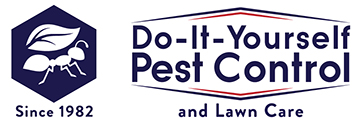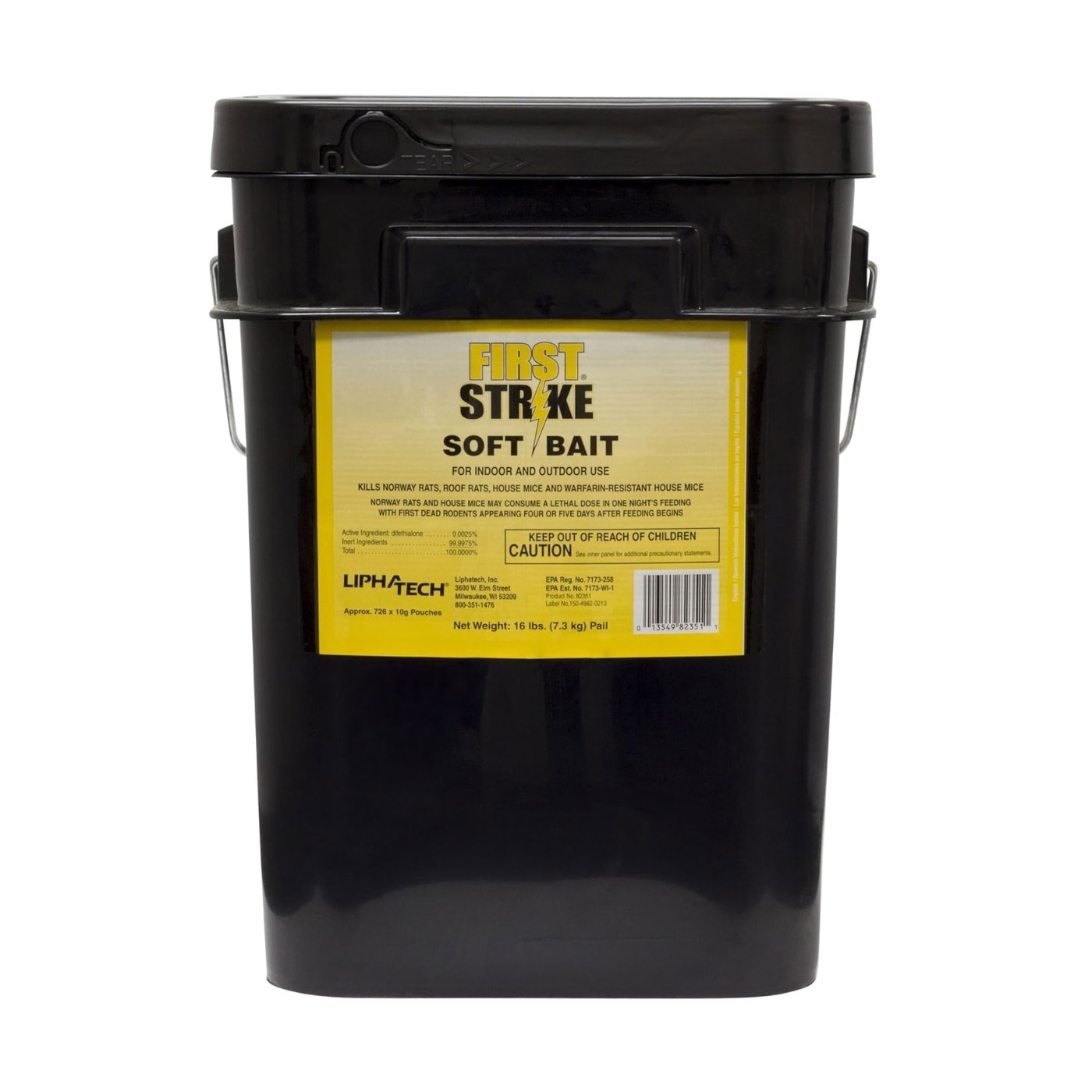
First Strike Soft Bait
Starting at $141.99
BUNDLE & SAVE 5%!

Product Information
First Strike Soft Bait-High Bait Acceptance
When using rodent baits, you must have a bait with high acceptance, which FirstStrike by Lipha Tech accomplishes. FirstStrike Rodent Bait is a soft bait that does well in rodent acceptance. It is especially useful when other food sources compete with a rodent bait. These soft pouches may be used on vertical or horizontal rods inside tamper-resistant bait stations, allowing the enticing aroma to attract the rodents. First Strike Soft Bait with difethialone is a single feed bait, giving you quick results. Rodents receive a lethal dose in one night's feeding, with the first dead rodents appearing four or five days after feeding
Packaging
- 16 lb and 4 x 4 lb pails (10 gr pouches)
- 16 lb Pail (40 gr pouches)
Top Features
- Works quickly in high infestation areas
- Contains no wax, enhancing its palatability to rats and mice
- Maintains acceptance and integrity in both hot and cold environments
- Unique package design allows the aroma to escape, attracting rodents
- High acceptance by rodents, even when competing for food is available
- SoftSecure Technology (SST)
 1. Inspect for rodent activity. Inspect for rodent activity to determine bait placement of the First Strike Soft Bait. It is crucial to place bait in areas where they run or areas close to their habitats and nests. Rodents tend to follow their established paths. Many times there will be a stale smell in areas of rodents, or your pets will become excited near their locations. Look for chewing or gnaw marks, urine stains, accumulation of nesting materials (shredded paper, fabric, etc.) in small piles, and rodent droppings.
1. Inspect for rodent activity. Inspect for rodent activity to determine bait placement of the First Strike Soft Bait. It is crucial to place bait in areas where they run or areas close to their habitats and nests. Rodents tend to follow their established paths. Many times there will be a stale smell in areas of rodents, or your pets will become excited near their locations. Look for chewing or gnaw marks, urine stains, accumulation of nesting materials (shredded paper, fabric, etc.) in small piles, and rodent droppings.
2. Increase Sanitation: Use tight-fitting lids on garbage cans and enclose exposed pet food. Keep outdoor grills clean and eliminate garbage and clutter around your house. As much as possible, keep bird feeders and compost bins far from your house.
3.  Identify the rodent. Mice have long tails relative to their bodies. They have a small body, large ears, and a pointed nose. Dropping are about 1/4" in length They prefer their nest near food, but may forage 30 feet for food. They are nibblers. They eat a small amount of food at several feeding spots. Most mice are active at night.
Identify the rodent. Mice have long tails relative to their bodies. They have a small body, large ears, and a pointed nose. Dropping are about 1/4" in length They prefer their nest near food, but may forage 30 feet for food. They are nibblers. They eat a small amount of food at several feeding spots. Most mice are active at night.
Roof rats' tails are longer than the head and body in proportion. It has a slender body and a pointed nose. Their droppings are about 1/2" in length. Roof rats usually nest and enter in the upper parts of buildings and are excellent climbers. Roof rats have extra pads and longer digits on their paws for climbing.
Norway rat's tail is shorter than the head and body, and it has a thick body. They prefer to live in burrows but may nest in walls and basements. They can forage 400 feet for food and are most active at night. The mice will be on both levels. Their gnawing capability is strong; they can gnaw through a lead pipe
4. Use bait stations for the best results. Continue to refresh the bait supply. If using this bait outside, bait stations are mandatory according to the label. Bait stations come in two forms, tamper-resistant and standard. Most bait stations are tamper-resistant. Tamper-resistant bait stations like Aegis RP Bait Station or Ambush Bait Stations are excellent choices.
5. Continue to monitor the rodent bait stations and maintain a fresh rodent bait supply.If you see a lot of activity in two or more consecutive stations, add more bait stations in between for increased performance. Roof rats and mice tend to feed on smaller amounts in various placed bait stations, while the larger Norway rat feeds on a larger amount of bait at fewer bait station placements.
6. If possible, limit the frequency of cleaning of the stations. Rodent scents are attractive to other rodents. So once one rodent has entered, other rodents are likely to follow. Since rodents have excellent tastes, be careful not to contaminate your hands with any scents such as nicotine or lotions. Use rubber gloves when handling the stations.
- For mice: Apply 1 pack per placement, usually 8 to 12 feet apart. Up to four packs may be needed at points of very high mouse activity. Maintain a constant supply of fresh bait for 15 days or until signs of mouse activity decrease.
- For rats: Apply 9 to 43 packs per placement, usually spaced 15 to 30 feet apart. Maintain a constant supply of fresh bait for 10 days or until signs of rat activity decrease
- Follow Up: Wear waterproof gloves and dispose of visible dead animals and leftover bait. Repeat treatments of baits if reinfestation occurs and maintain a constant supply of rodent bait.
A new soft bait on the market, Nectus has very good bait acceptance and is about 40% less in cost.
| Packaging | 10 gr pouches: 16 lb. pail & 4 x 4 lb pail | 40 gram pouches: 16 lb pail |
|---|---|
| Product Label | First Strike Soft Bait Label |
| SDS | First Strike Soft Bait SDS |
| More PDF's | Veterinarian’s Guide |
| Target Pest | |
| Active Ingredient (s) | Difethialone 0.0025% |
| For Use : |
|
| Yield | N/A |
| Mixture|Application | N/A |
| Shipping Restrictions | CA |
Related Products
-
 JT Eaton's Nectus 2G Soft Bait Second Generation RodenticideSpecial Price $80.12 Regular Price $88.50
JT Eaton's Nectus 2G Soft Bait Second Generation RodenticideSpecial Price $80.12 Regular Price $88.50




